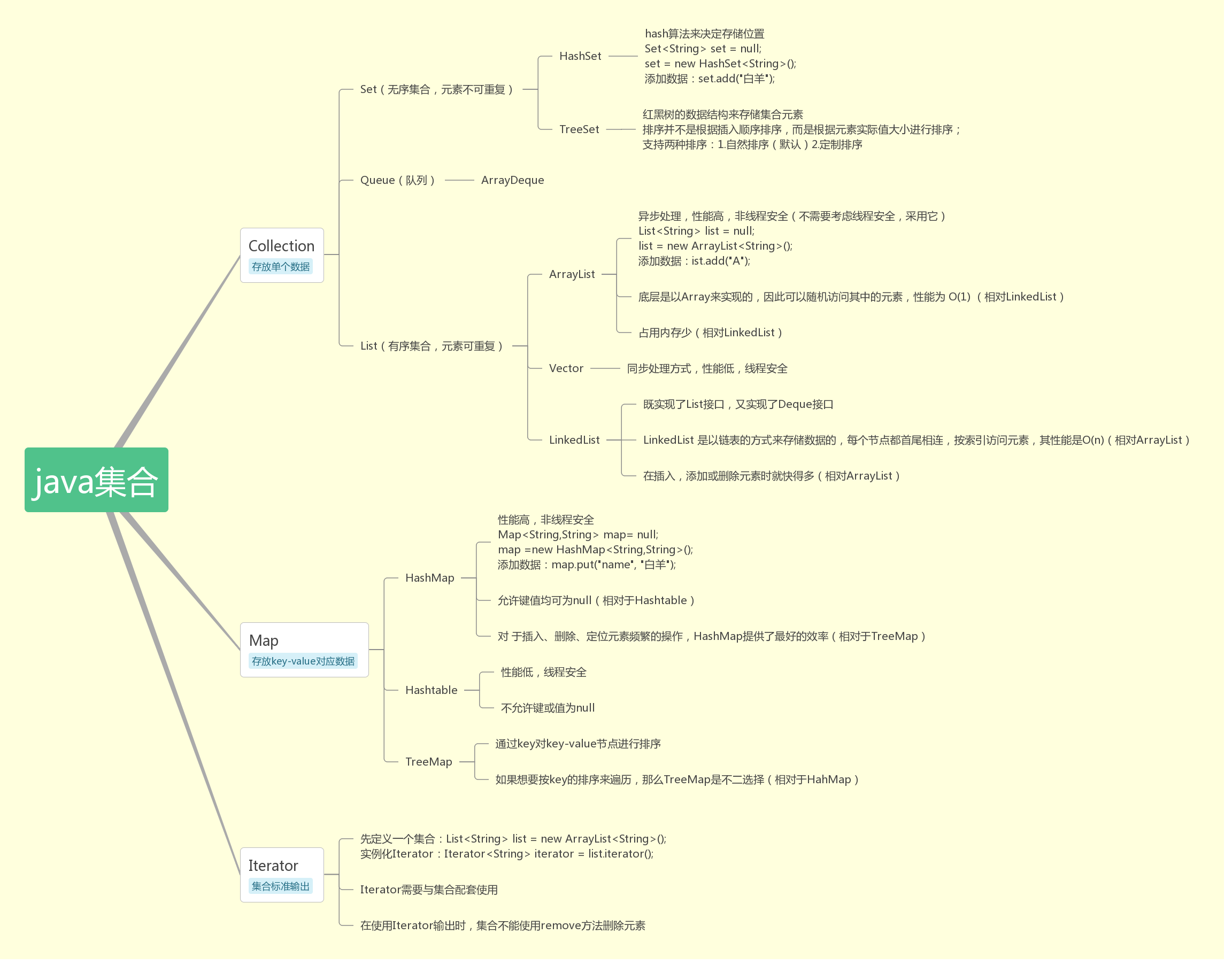一、集合的分类:
二、常用的集合:
1、Java collection:Jdk中的集合
1、List
//List List<String> list = new ArrayList<>(); list.add("a"); list.add("b"); list.add("c"); System.out.println(list); // [a, b, c]2、Map
//Map Map<String,String> map = new HashMap<>(); map.put("name","by"); map.put("age","18"); System.out.println(map); // {name=by, age=18}3、Set
//Set Set<String> set = new HashSet<>(); set.add("a"); set.add("b"); System.out.println(set); // [a, b]4、Iterator遍历集合
//Iterator遍历List集合 Iterator iterator = list.iterator(); while (iterator.hasNext()){ String parm = (String) iterator.next(); System.out.println(parm); if(parm.equals("a")){ iterator.remove(); } } System.out.println(list); // [b, c]5、遍历MAP
/** * 遍历Map * * 获取方法: * 第一种方式: 使用keySet * 需要分别获取key和value,没有面向对象的思想 * Set<K> keySet() 返回所有的key对象的Set集合 */ static void traverseMap(){ Map<Integer, String> map = new HashMap<>(); map.put(1, "aaaa"); map.put(2, "bbbb"); map.put(3, "cccc"); System.out.println(map); Set<Integer> ks = map.keySet(); Iterator<Integer> it = ks.iterator(); while (it.hasNext()) { Integer key = it.next(); String value = map.get(key); System.out.println("key=" + key + " value=" + value); } }
2、Guava Collections(google开源工具 )
1、List
//创建List List<String> list = Lists.newArrayList("a","b","c"); list.add("d"); //反转List System.out.println(Lists.reverse(list)); // [d, c, b, a] //将List集合转换为特定规则的字符串 String listResult = Joiner.on("-").join(list); System.out.println(listResult); // a-b-c-d2、Map
//定义Map Map<String,String > map = Maps.newHashMap(); map.put("name","by"); map.put("age","23"); System.out.println(map); //{name=by, age=23} //将Map集合转换为特定规则的字符串 String mapResult = Joiner.on(",").withKeyValueSeparator("=").join(map); System.out.println(mapResult); // name=by,age=23 //定义Map中放List的形式(Map<String,List<Integer>>) Multimap<String,Integer> maps = ArrayListMultimap.create(); maps.put("map",1); maps.put("map",2); System.out.println(maps); //{map=[1, 2]}3、Set
//定义Set Set<String> set = Sets.newHashSet(); set.add("value");
3、Trove
1、构造基本类型的集合
//直接构造int类型的集合 TIntArrayList intList = new TIntArrayList(); intList.add(1); intList.add(2); intList.add(3); intList.reverse(); System.out.println(intList);
